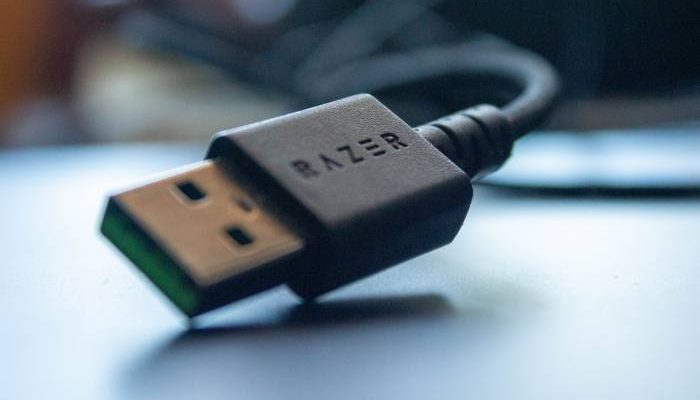Everyone uses USB connectors, and with the Type-C interface, it’s easier than ever to use it. Only the marking of the version and the speed associated with it is confusing. The USB4 version 2 variant is new.
I wish everything around the USB interface was as easy as connecting the devices themselves. Thanks to the double-sided USB-C connector, you can no longer get confused when plugging the cable into the socket. Thanks to EU political pressure, this type of connection will become a standard feature in many devices by 2024.
The USB Implementers Forum (USB-IF), which is responsible for determining USB standards, has caused considerable confusion in the naming of different versions and supported speeds. Instead of USB 2.0, 3.0 and 4.0, we have to live with the neck-breaking naming of USB 3.2 Gen1, Gen2, Gen2x2 or USB4 Gen3x2 and designations such as Hi-Speed, SuperSpeed or Super-Speed Plus. The latest standard is officially called USB4 version 2.0. Importantly, it not only brings higher speed at peak transmission, but also breaks some older boundaries.
120 Gb/s at peak speed
New standards must always be faster than previous ones. This is as true for USB as it is for Wi-Fi or RAM. When the first generation of the USB 1.0 interface arrived more than 25 years ago, the data transfer rate was a laughable 12 Mb/s from today’s perspective. From today’s perspective, a transfer speed of 1.5 MB/s was very low. USB4 version 2.0 data throughput has doubled compared to the previous generation to a total of 80 Gb/s, or 81,920 MB/s. However, there have been no major changes, USB4 version 2 still uses four transmission channels, each of which can now transmit 40 Gb/s. However, USB4 version 2.0 also has functions that USB could not do before. For example, there is a mode in which the data transfer is no longer symmetrical.
Comparison of USB standards
Few technical topics are as confusing as naming the so-called USB standards. In the table we present a comparison from USB 2.0 to the present.
| USB 2.0 | USB 3.0 | USB 3.1 | USB 3.2 | USB4 | USB 4 Version 2.0 | |
| Official name |
USB 2.0 |
USB 3.2 Gen 1×1 |
USB 3.2 Gen 2×1 |
USB 3.2 Gen 2×2 |
USB4 Version 1.0 |
USB4 Version 2.0 |
| Introduced in |
2000 |
2008 |
2013 |
2017 |
2019 |
2022 |
| Maximum symmetrical speed |
480 MBit/s |
5 GBit/s |
10 GBit/s |
20 GBit/s |
40 GBit/s |
80 GBit/s |
| Asymmetric transfer rate |
NO |
NO |
NO |
NO |
NO |
YES (120/40 GBit/s) |
| USB type A |
YES |
YES |
YES |
NO |
NO |
NO |
| USB Type-C |
YES |
YES |
YES |
YES |
YES |
YES |
Under normal circumstances, USB4 version 2 operates at its highest speed in both directions simultaneously. In the new standard, it is 80 Gb/s to and from the connected device to the computer. However, version 2.0 can also work in asymmetric mode. Thanks to the use of an additional transmission channel, it can reach a maximum speed of 120 Gb/s in one direction. With such a fast transfer, however, it is necessary to pay a tax in the form of slowing down the transfer speed in the opposite direction, in which the limit will be only 40 Gb/s.
We will especially appreciate the inclusion of asymmetric acceleration of the transmission speed in the future, for example when transferring data to an 8K HDR monitor. In this case, data will run from the computer to the monitor at a speed of 120 Gb/s and in the opposite direction at a speed of only 40 Gb/s. The new standard USB4 version 2.0 will also appreciate external SSD disks or graphics cards. But there is one catch. The high throughput we mentioned is not mandatory for the second version of USB4. USB-IF only requires 20Gbps speed for USB4 version 2.0 certification, higher speed is optional. Both devices agree on a common maximum speed at the time of connection.
From the point of view of user convenience, the important news is that the second version of USB4 will be backward compatible with previous versions. In practice, this means that devices with different USB standards can be connected via USB-C, and you don’t even need new cables for this. So, to be precise, you don’t necessarily need new cables, but you may not be able to take advantage of all the benefits of USB4 version 2. Specifically, this means that passive cables up to 1 meter in length, which used to transmit data at 40 Gb/s, they will now be able to transfer up to 80 Gb/s, in some cases data can be transferred up to 120 Gb/s. However, when transmitting over a distance of more than one meter, you need new active cables with the correct controllers in addition to the relevant end devices.

Classification USB4 version 2: thanks to the type C connector, the USB cable can no longer be connected incorrectly. But different USB standards differ in speed, among other things. | Source: Marcus Urbenz/Unsplash
Another side effect of the new standard is that it allows USB 3.2 to be tunneled at 20 Gbps, whereas previously a maximum of 10 Gbps could be tunnelled. To increase the throughput above 40 Gb/s, no more transmission channels will be added to the interface, instead USB-IF has made a change to the physical layer (Layer 1 OSI model). The new PAM3 modulation transmits three bits in two clock cycles, whereas previously only one bit per clock cycle traveled through the cable. However, in order for everything to work correctly, it will be necessary to make adjustments to the USB controllers.
Users will still have a practical USB-C connector available, but it will not be possible to determine the maximum transfer speed at a glance. According to USB-IF, manufacturers should indicate the potential speed of connectors and cables through the appropriate logo. Instead of using words, expressions such as “USB 20Gpbs” or “USB 80Gpbs” should be used to indicate the supported speed. Unfortunately, it is still not clear whether we will actually see this designation. Users will have to hope that device and cable manufacturers will at least list the supported speed in the documentation. Along with the new standard, the USB-IF organization also published new specifications for the USB Type-C and USB Power Delivery standards. We expect the arrival of the first devices with USB4 version 2.0 in about a year, sometime in mid-2024.
Next generation Thunderbolt
The USB standard is closely related to the Intel Thunderbolt interface, and of course this also applies to USB4 version 2.0. The next generation of this interface will probably eventually be called Thunderbolt 5, and its specifications will be stricter than in the case of USB. Thunderbolt 5 will mandatorily allow a speed of 80 Gb/s in both directions, and it is also prescribed to combine three Tx channels for asymmetric transmission at a speed of 120 Gb/s.
Source: Lifewire








